Rebellious Ores: Sulfides, Selenides and Tellurides
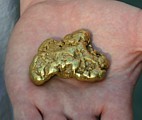
.
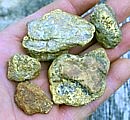
|
Rebellious Ores: Sulfides, Selenides and Tellurides |
 |
||
|
. |
Interested in solving the difficulties of dealing with rebellious ores and recover their gold and silver? Many types of valuable ores contain Sulfides, selenides or tellurides and they can make processing these ores more difficult. Recognizing these minerals can help us understand and find gold deposits in the field. There are a lot of different kinds of minerals that fall into these categories, and in the article below I'll take a look at all of the best known of these valuable minerals. Take a look at the following information....... |
 |
|
The early
day miners feared it, and it happened a lot more often than they would have liked: the
easily worked rich surface ores they discovered on the surface gave way as they mined
downward, to a vein full of sulfides, base metals and other nasty, rebellious and
refractory ores. In many locations where they
had initially been recovering 90% of the assay values processing oxidized surface ore,
with the rebellious sulfide ores they were recovering less than 50%. The rest of the precious metals in their ore
simply flowed uselessly out from the mill and into the tailings pond. Many rich and
profitable mines suddenly became money losers when the miners got down to those
unoxidized, primary ores. That's why the miners called them rebellious. |
||
| A great example is found in the silver
deposits of Austin, Nevada. Here, the first miners found rich oxidized silver chloride
ores on the surface, some of them running as high as 1000 ounces per ton. That surface ore
presented no real problems in milling, so the miners installed the Washoe pan process
already in use at Virginia City and started to pull the silver out of their ores.
Unfortunately, at only about 75 feet down, the miners struck the water table and the ores
below that were unoxidized and full of silver bearing sulfides like enargeite, polybasite,
tenantite and other rich but rebellious minerals that refused to surrender their values in
the mills of the day. New and expensive roasting processes had to be installed, and as a
result, the mills charged $50 and up to mill the ore and only paid 80% of the assay values
back to the miners. By contrast, charges for processing free milling ore at Virginia City
was only around $20. Sulfide ore from Austin that didn’t contain at least 70 ounces
per ton of silver had to go out on the dumps, because it was unprofitable to ship to the
mill! |
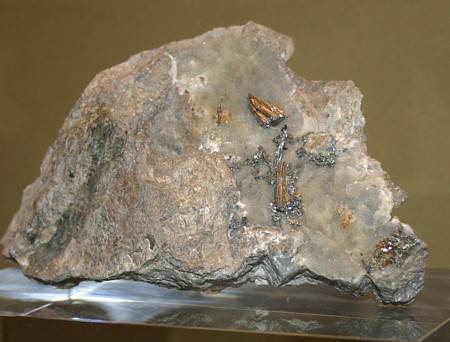 Calaverite - Gold Telluride |
|
This sad
story was repeated all over the Western US and actually all across the world. Over the years, miners worked to develop new ways
to handle these difficult ores, and they made progress as time went on, but even cyanide
doesn't normally do as well in processing sulfide ores without some special efforts. Sure, today we've got some new technology, and
there is no doubt we’re a lot better off, but sulfide ores still require a lot of
extra treatment and handling to extract their values – which adds a significant cost.
Let's take a look at some of those devilish minerals that make us work extra hard. Sulfur, selenium, and tellurium are all members of the same chemical family, and they form similar compounds when they react with other chemicals – this is why I am addressing the three of them together. So what are these nasty problem causing minerals? Well, sulfides, selenides and tellurides are simply minerals which contain sulfur, selenium, and tellurium combined with some metal. Unusually this is the metal we are interested in, but sometimes other valuable metals can be mixed in as trace elements. An example of this is when gold occurs disbursed through a crystal of pyrite. While pyrite itself is not particularly valuable, if significant gold is contained within it, then certainly the gold is valuable. |
||
| . | ||
Sulfides Sulfides are the most common member of this mineral grouping
and most prospectors have seen them at one time or another. The familiar
"fools gold" is iron
pyrite. Pyrite,
galena,
sphalerite, and
chalcopyrite are
all common sulfide minerals that are found in many precious metal veins and other hard rock deposits. When metals combine with sulfur, the resulting
mineral is called a sulfide. These minerals are the most important sources
of most base metals like copper, lead and zinc. Most have a reflective metallic sheen, like lead sulfide,
also known as Galena. There are also sulfur minerals which contain more than one metal
combined with sulfur such as parargyrite (ruby silver), bournonite (peacock copper ore) and tetrahedrite. Most
sulfides contain an excess of sulfur more than what their chemical formula
would imply. As an example, the chemical formula for galena is PbS. That means there is one atom of sulfur to each atom of lead. However in reality,
galena crystals usually contain considerably more sulfur than a 1 to 1 ratio with the lead
would call for. The same is true for pyrite and many others. |
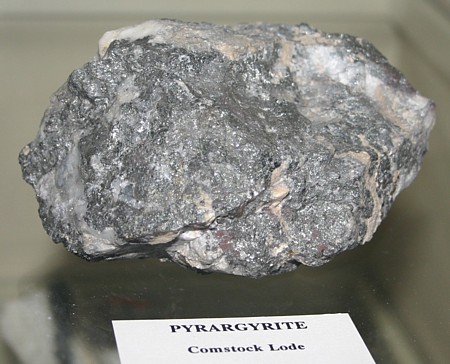 |
|
Sulfides
are generally fairly dense and heavy, so they can be recovered by simple gravity methods. Vibrating tables are sometimes used for this
purpose and the sulfides will usually show up in the table middlings. However, in most
commercial milling operations, sulfides are recovered by a method called flotation. This technique employs the fact that sulfides are
not easily wetted by water. As a result, in a froth of tiny bubbles, they will tend to
stick to the air bubble. The froth of tiny
bubbles with their concentrate of sulfides can then be separated off and treated.
Different minerals have a preference for different types of conditions in the flotation
cell, so by planning the chemicals used to make the froth, the ph of the water and other
factors, it is possible to separate differing sulfide minerals out of ores which contain
more than one type of sulfide. This is extremely important in base metal ores which
contain multiple valuable metals. |
||
| Just why are sulfides such a big problem? The first problem is that they contain locked in values. That was the biggest reason sulfides presented so many problems to the old time miners. Gold and silver contained inside some sulfides amalgamates poorly, and in those early days, amalgamation was the chief recovery method for hard rock ores. The old timers developed the pan processes where they ground up the ore and amalgam mixture for hours at a time (the Washoe Process), and for some ores that did the job. Sometimes an extended grinding period did not help very much, and some sort of roasting was required prior to amalgamation for it so be successful. | 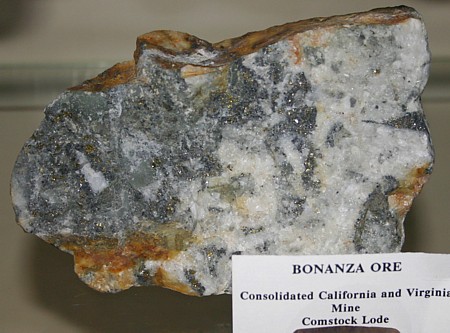 |
|
| The second problem with sulfides relates to the
difficulties that these minerals present in the cyanide leaching processes. The first difficulty with cyaniding sulfides is that in a wet
environment with oxygen, sulfides tend to oxidize to form sulfuric acid. Acids will destroy the cyanide and create
poisonous gases. It is extremely important
when treating high sulfide ores with cyanide to keep a sufficient protective base in the
solution. Many sulfide minerals also contain things like copper or antimony that
can react with the cyanide, preventing the cyanide from leaching out the gold and silver. For information on methods to deal with and extract gold, silver and base metals from these refractory ores, I recommend two pages on this website. The first is on Roasting and Smelting and the second is on Cyanide and other leaching methods. |
|
|
Selenides Many selenide minerals have often gone unnoticed in years past, an in many cases, selenium is present as traces in normal sulfide minerals. Only in recent times have mineralogists routinely recognized the difference between the standard silver sulfide acanthite (argentite) and the lesser known silver selenide, naumannite. In recent years, naumanite has been found to be an important mineral in low sulfidation epithermal bonanza grade ores in Nevada. The rich Nevada ore deposits at the Ken Synder mine at Gold Circle, the bonanza deposits of the Sleeper mine in Humboldt County and the deep epithermal veins at the Holister mine all contain naumannite as an important ore mineral. Many silver bearing deposits in Nevada previously noted to contain sooty black deposits of silver sulfide, may actually be rich in silver selenides, especially naumannite, because of that mineral’s similar fine grained black appearance. While sulfur and its associated chemicals are toxic enough, selenium is even worse. |
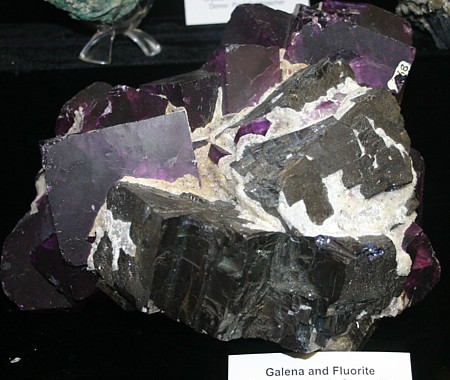 |
|
Tellurides Tellurides are minerals containing tellurium. While it is rarely found in nature as the native element, tellurium is one of the very few elements that chemically combines with gold to form natural stable minerals. While not common on a world wide basis, locally rich telluride deposits have formed some very famous deposits. Gold bearing tellurides were important in some of the richest ores at Goldfield, Nevada – high grade ore that contained upwards of 10,000 ounces of gold per ton. If you have tellurides in your ore, it’s important that you are aware of that fact, because it affects how you will process it. Tellurides are leachable by cyanide but can take an extended long time period, as the telluride minerals have to be dissolved completely by the leaching solutions. There are a several telluride minerals that are of interest to prospectors and miners – here are a few of them: Calaverite: This mineral
is a combination of tellurium and gold.
Calaverite is the name of
a tellurium bearing mineral that occurs in certain low temperature hydrothermal veins, but
is also sometimes found in higher temperature veins. It was first discovered in Calaveras
County, California, but is also important at Cripple Creek and Telluride Colorado, as well
as Kalgoorie, Australia. It is brittle and has a brassy gold to silver white metallic
sheen. It’s appearance sometimes confounded old time prospectors who confused it with
pyrite or
arsenopyrite. It commonly occurs in the presence of sulfide minerals. Unlike
Pyrites, Calaverite contains significant gold - about 40% gold by weight. With a 40
percent gold content by weight, you can see it wouldn’t take much calaverite to make
for some very rich ore. |
||
Want to know a little bit more about this crazy prospector guy? Well, here's a little bit more about me, and how I got into prospecting: Chris' Prospecting Story Interested in seeing more gold? Here are some interesting photos of beautiful Gold Nuggets